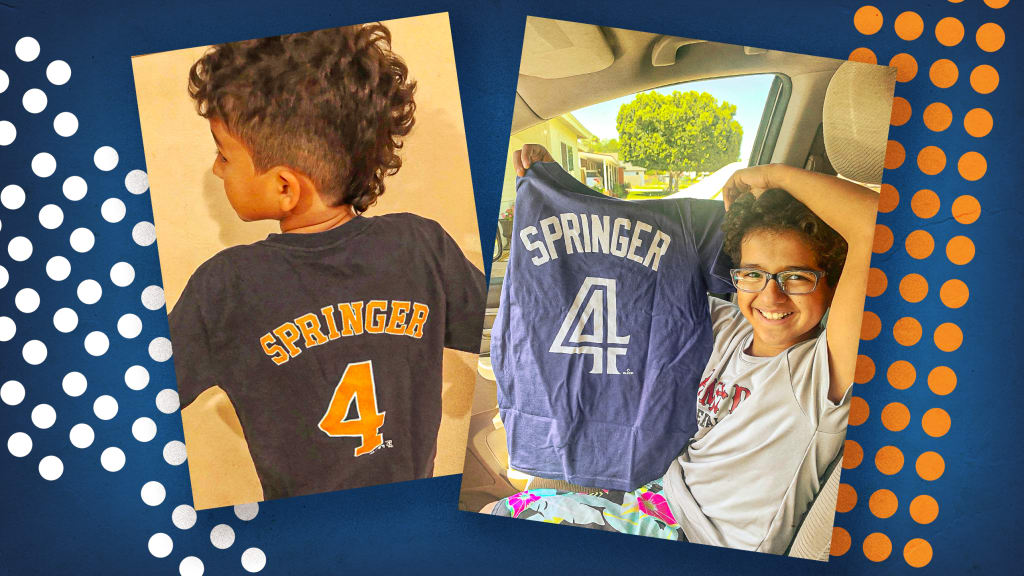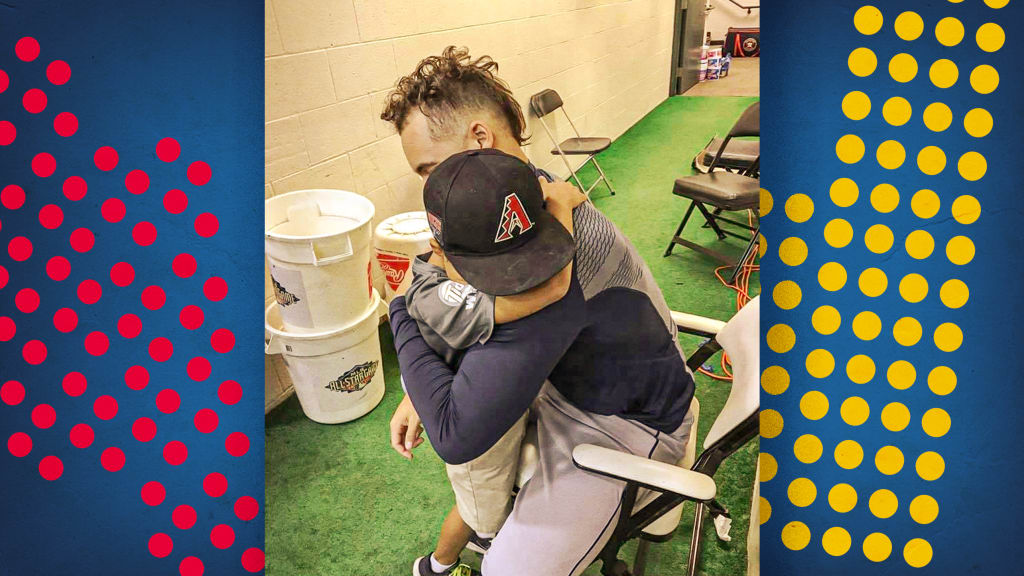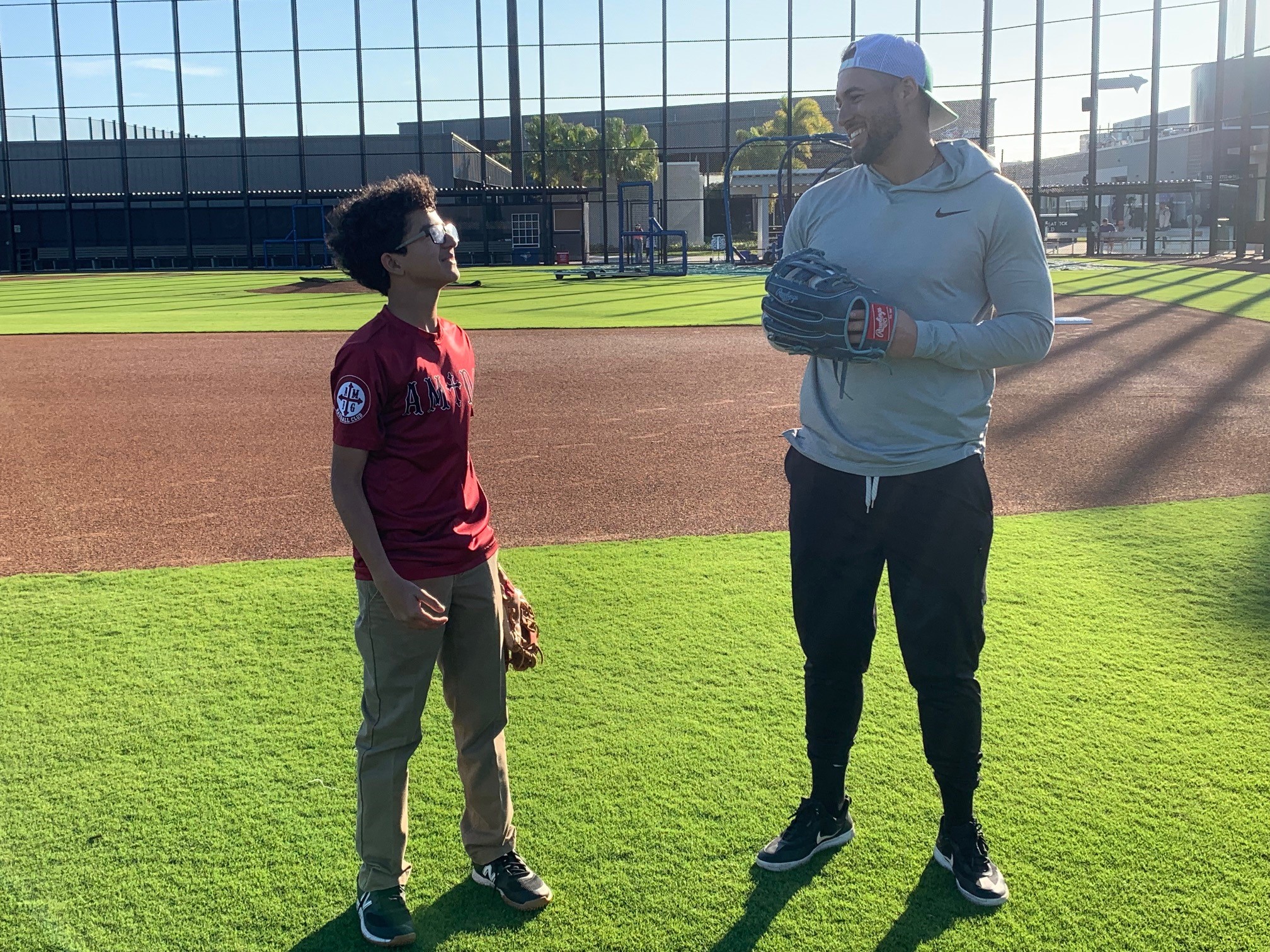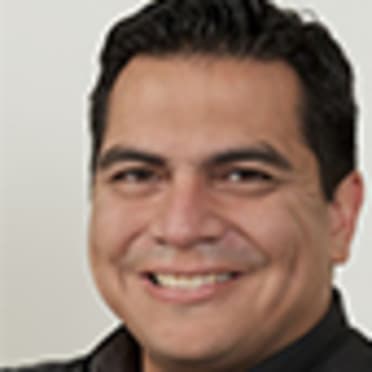The full-sized school bus eased to a stop in front of our house and the last passenger, a curly-haired kid with a million-dollar smile, popped out of his seat in the front row and high-fived the driver.
The big yellow bird had finally landed, its doors swung open and our son Mateo jumped off the bottom step like he had done it many times, even though it was his first ride on a bus.
“Dad!” then Mateo paused. “I’m h-h-home!”
Mateo shifted to non-verbal communications with the bus driver, issuing goodbye waves and a round of thumbs-ups, before the driver closed the doors to head back to school for another round of student pick-ups.
In between recess and reading, Mateo had speech therapy classes that morning at his usual preschool, followed by another session at yet another school a few miles away. He was not quite 4 years old, but he was well into his journey as a stutterer. So was our family.
Mateo meets with Jessica Hudson, his speech and language pathologist, every week as they work through strategies to help him push through the disfluency. Sometimes the stutter is so pronounced, he fights for every word. It makes people uncomfortable. Other times, it’s barely there and his speech pattern ebbs and flows, just like anyone else’s, giving false hope to the notion that somehow, he will eventually “grow out of” the stutter.
In the beginning, my wife and I were determined to help our boy “fix” his speech. We played word games. We told him he didn’t always have to speak. We’d even finish his sentences or guess what he was trying to say. We later learned some of our experiments were actually stressors that exacerbated tension in his throat and neck. They did more harm than good.
But here’s the thing with stuttering: You don’t fix it. And you don’t cure it. There are tools, techniques and strategies that can help manage it. But what works for one person might not work for another.
In our case, the real “fix” came with patience, awareness and help from a big league ballplayer.
I knew who George Springer was, but I didn’t know he stuttered until Mateo told me. Years ago, as he searched online to learn about people like him, he came to learn the names of almost all the athletes and celebrities who stutter or stuttered as a child. It blew his mind when he discovered Darth Vader -- actor James Earl Jones -- stutters. He loves the television series "The Office" partly because John Krasinski, the actor who plays his favorite character Jim Halpert, is married to Emily Blunt, who stuttered as a child.
I don’t have James Earl Jones in my contacts. Emily Blunt lives on our television and in the movies. But George Springer? He’s one person we might have a chance to meet or at least see in person because of my job in baseball. At the time, I recalled thinking how important it was for Mateo to meet someone who spoke like him -- and thrived in spite of it.
I wanted him to meet George.

I’m a father of three and I love baseball. In my mind, I envisioned Mateo watching George take batting practice before a game and then -- just maybe -- pointing at our son when he was done. In this scenario, I imagined Mateo and I watching a few innings in the stands and eating ice cream while we talked about how cool it was to see someone who stutters fulfilling his dream in the big leagues.
What actually happened changed the course of Mateo’s life, altering his perspective on his stutter and himself.
It was the spring of 2017 when I discovered the Astros (George’s team at the time) were coming to our hometown to play against the D-backs at Chase Field. The series was scheduled a few days before Mateo’s 8th birthday. What better way to celebrate than watching big league batting practice with a chance to meet an aspirational figure?
I called Alex Cora, then the Houston bench coach. He was someone I had covered when he was a Major League player and a star in Puerto Rico’s winter league. One of my earliest memories of Cora is standing side-by-side with him when he was a Boston player and talking to students from University of Massachusetts Lowell about baseball and life in the hours leading up to a Rangers and Red Sox matchup at Fenway Park. Cora, now the manager of the Red Sox, has kids. He has a family. He gets it. I told him about Mateo and how much it would mean for him to see George take batting practice.
“Sure, Jess. Not a problem,” Cora said. “Let me know when we get to town.”
Later that summer, when the Astros arrived in Phoenix for a three-game series, Alex hooked Mateo up with a batting-practice pass.
Major League Baseball batting practice is a show unto itself. It’s customary for the home team to take batting practice first and then the visiting team follows with its own round of hitting and fielding practice. In a roped-off area near home plate, there’s always a group of lucky fans who get to watch the hit parade from behind the batting cage.
It was the first batting practice I’d been to with Mateo in Phoenix. There’s something special about the sound of a ball being crushed by a wood bat and the chattering of ballplayers in the hour leading up to a big league game. The sights and sounds are exhilarating. For a little kid like Mateo, it was incredible. We looked for George, but he never appeared. The clock was ticking toward first pitch and panic crept in.
“Did we miss him?”
“Is he coming out to hit?”
“Oh, no. George is probably hitting in the cages inside and Mateo is not going to see him.”
Then, Alex emerged seemingly out of nowhere. He grabbed Mateo’s hand and pulled him under the retractable belt.
“Mateo, you’re coming with me,” he said.
Like baseball’s pied piper, he guided Mateo across the field, through the visitors’ dugout and to the steps that led under the stadium to the batting cages. A player tapped me on the shoulder. He smiled and shook my hand and grabbed the ball that Alex had given Mateo and signed it.
“Who was that?” Mateo whispered.
“Son, that was Carlos Beltrán.”
Carlos Correa walked by, and Mateo’s eyes almost popped out of his head. We could hear Jose Altuve laughing. We just didn’t know where the sound was coming from.
We floated past Beltrán and toward the batting cages. Even today, Mateo can vividly describe getting inside the cage and Alex throwing batting practice to him. The balls were so white, he recalls. The bat was heavy. He remembers exactly where Alex was positioned behind the pitching screen.
I can’t recall all of it because it was so surreal, it felt like a dream. I do remember George walking down a hall toward Mateo, whose head cocked back as he looked up. Mustering up courage, Mateo tucked his hands behind his back before launching into a halting sentence that would help shape the next half of his life. George sat down in a folding chair directly in front of Mateo so he could look him in the eyes.
“I-I-I got one qu-qu-question,” Mateo said. “How did you get past your s-s-stuttering?”
“Well, truthfully, I s-still have it,” George answered.
The pair chatted for a few life-changing minutes. They talked about life as a stutterer, how mean kids can be, how to have thick skin and to always have fun. Mateo beamed. George laughed and used techniques Mateo is still trying to master, like carefully choosing words he could say and pivoting to different words when he started to stutter.

They saw each other for who they are on the inside and not what society thinks a person who stutters is. George saw Mateo the way we see Mateo. The moment was so intimate, I felt like I needed to leave the room.
Inspired, Mateo left determined to raise awareness about stuttering to his classmates through public presentations, getting in front of the class and pushing through stops and starts with confidence and humor. The question-and-answer portion of his presentation is always entertaining. Nothing is off limits and his personality shines. He gives his presentations every year, and last year, after an unfortunate situation at school, he broadened his audience to teachers and support staff. His parents wanted accountability for certain treatment Mateo had received by one person who should have known better. Mateo wanted to educate.
In honor of George -- and their shared experience -- Mateo wears jersey No. 4. At just 13 years old, he tries to have thick skin, to push through insensitivities lobbed by kids and adults. To be resilient. Just the other day, a kid asked him why he couldn’t “just talk normal.” He cried and his parents cried, too.
“What would George do?” I asked him. He knows what George would do, but on days like that one, it was easier said than done.

The pair has stayed in touch since 2017, and they’ve watched each other grow from afar. A few weeks ago, they reunited at Spring Training for a feature that ran on MLB Network. George, who plays for the Blue Jays, has a young son now with another baby on the way. He is the national spokesperson for SAY: The Stuttering Association for the Young.
This summer, Mateo has plans to work on a public service announcement about stuttering awareness to help kids like him and families like ours. In less than two years, he will be in high school, a chapter that will bring new adventures -- but challenges, too.
Mateo doesn’t wonder how to get past the stutter anymore. He owns it. It’s part of his identity, but it’s not who he is. He’s a big brother, a loving son, a jokester, a baseball player, a friend and an emerging chess player.
Sure, he still feels the sting of rude remarks and that still hurts. He can just handle it better now. And as parents, it’s still common for us to hear things like, “I had a stutter when I was a kid, and I grew out of it. Maybe Mateo will grow out of it, too.”
Maybe he will, we respond. Maybe he won’t. Either way, Mateo has grown into it, and he’s perfect just the way he is.
